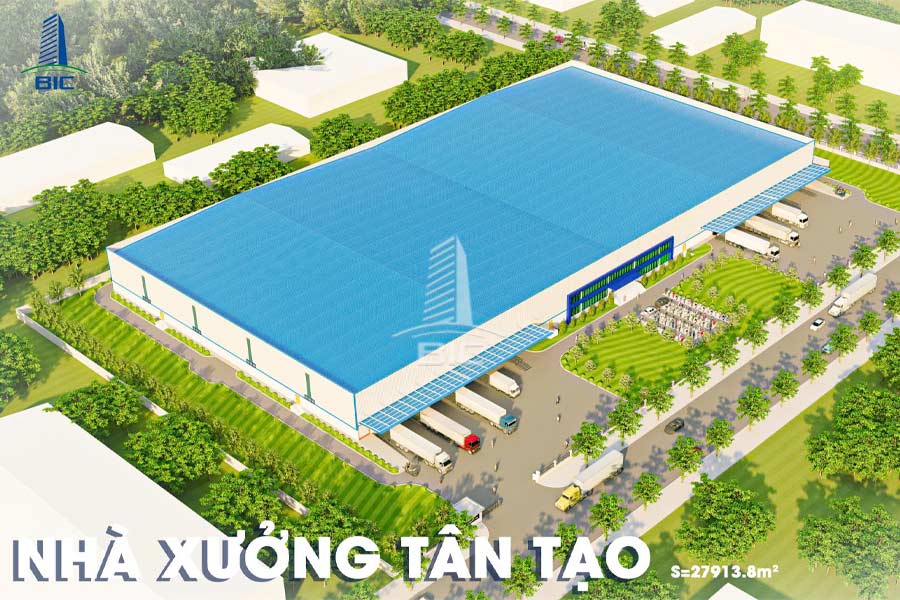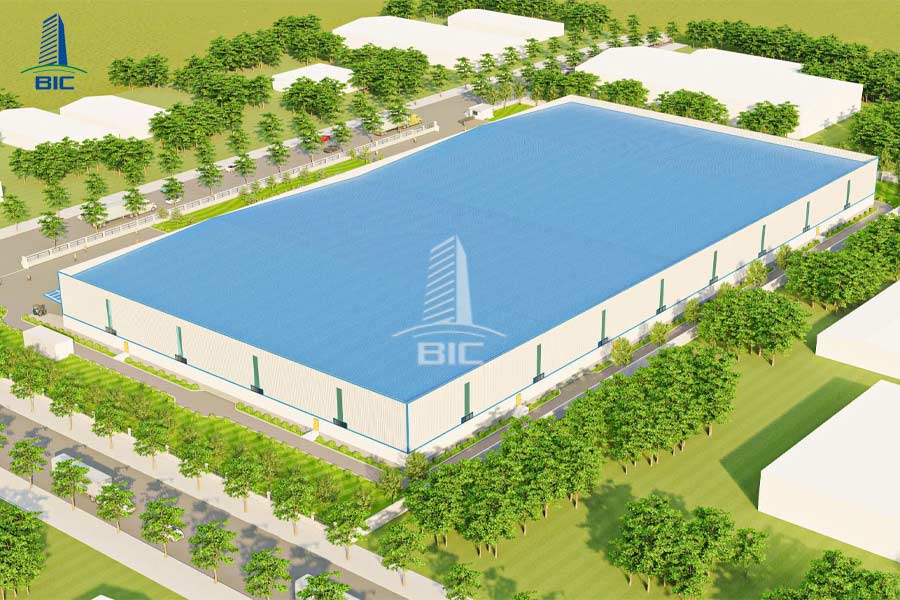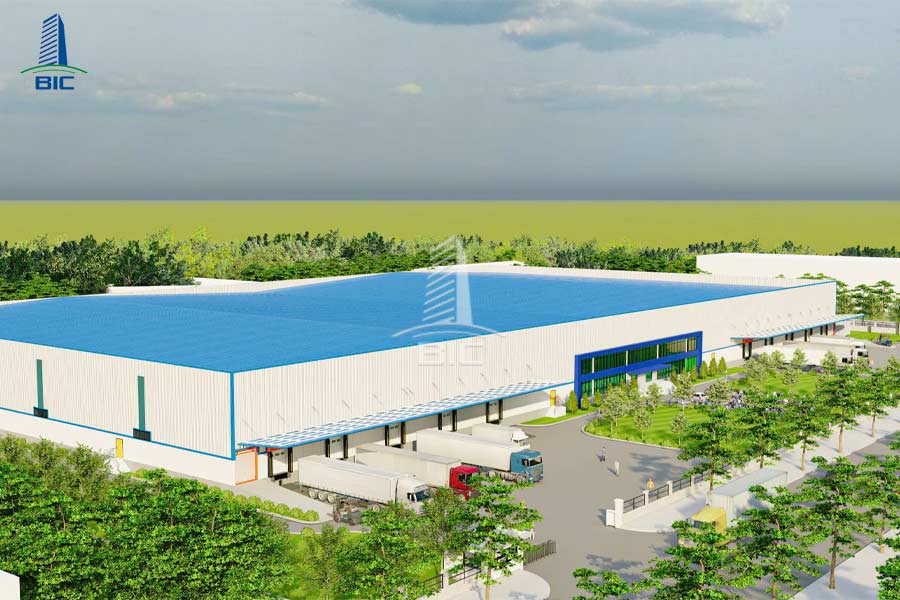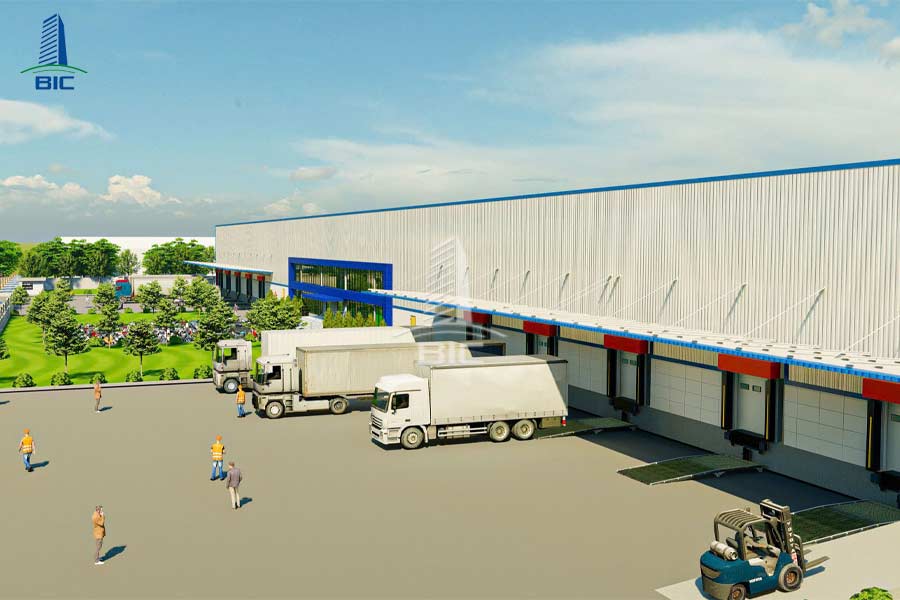
Investing in industrial factories in Vietnam has become a top choice for manufacturing and logistics investors. Rental factory projects are opening the door to sustainable, long-term returns. The demand for factory leasing continues to grow thanks to the wave of global supply chain shifts, the rapid development of industrial park infrastructure, and the government’s preferential policies.
However, to maximize profitability and enhance asset value, investors must focus from the design stage to the construction process, ensuring compliance with modern standards and flexibility for various manufacturing needs. A well-planned investment strategy not only optimizes costs and shortens the payback period but also attracts large, long-term tenants.
If you are looking for an investment channel that is both safe and offers outstanding growth potential, investing in rental industrial factories is a strategic move worth considering today.
The influx of investment from foreign direct investment (FDI) enterprises especially in manufacturing, processing, and logistics is putting significant pressure on the factory supply within industrial parks. International corporations tend to prioritize ready-to-operate factories to save on setup time and reduce initial capital expenditure. This creates great opportunities for investors owning rental factory models with high occupancy rates and stable income streams.

Vietnam’s industrial park system is strategically planned and located near seaports, international airports, and major expressways. This connectivity not only facilitates the transportation of raw materials and finished goods but also increases the commercial value of rental industrial factories.
The Vietnamese government offers various incentives to encourage investment in industrial parks, such as corporate income tax reductions, infrastructure cost support, and streamlined administrative procedures. These incentives help reduce the financial burden on investors while attracting long-term tenants, ensuring sustainable profitability for rental industrial factories.
Owning a rental industrial factory allows investors to maintain a steady, predictable income stream even during economic downturns. Lease terms often range from 3 to 10 years, ensuring stable revenue while enabling quick payback and optimal return on investment.

Land in industrial parks is becoming increasingly scarce, especially in areas near ports, airports, and major transport routes. Owning industrial factories in strategic locations not only generates rental income but also ensures steady appreciation in industrial real estate value over time.
Rental factories can accommodate various industries, such as garment manufacturing, electronics, food processing, machinery, and logistics. This diversity reduces dependency on a single tenant group and helps maximize asset utilization.
To attract a diverse tenant base, industrial factories should be designed with flexible layouts allowing subdivision into spaces starting from 500m² for small and medium-sized enterprises, or consolidation into thousands of square meters for large manufacturing corporations. Flexibility maximizes utilization rates and minimizes vacancy.

A major advantage in retaining long-term tenants is providing comprehensive legal support, including investment licensing, business registration, fire safety certification, and environmental permits. When tenants feel secure about legal compliance, they are more willing to commit to long-term leases.
In addition to high-quality infrastructure, offering extra services such as regular maintenance, 24/7 security, cleaning, and professional property management will improve tenant satisfaction. These services make your industrial factory stand out from competitors and sustain higher rental rates.
A standard industrial factory must not only meet technical requirements but also optimize operational efficiency and costs. Partnering with an experienced design and construction company ensures scientifically planned layouts that meet international standards while minimizing construction risks.

Before starting construction, investors should prepare a clear financial plan covering land acquisition, construction, operations, and maintenance costs. At the same time, revenue forecasts and payback period calculations are essential to ensure a sustainable and effective investment strategy.
The industrial rental market is highly competitive. Building a professional marketing strategy including online promotion, participation in industrial trade fairs, networking with business associations, and working with specialized brokers will help attract stable, long-term tenants.
Investing in rental industrial factories not only delivers stable cash flow but also drives sustainable asset value growth over time. With Vietnam being a prime destination in the wave of global manufacturing relocation, owning a properly designed and constructed industrial factory offers a strong competitive advantage in attracting high-quality tenants.
Don’t let the opportunity pass while the market is growing rapidly. Contact BIC today for comprehensive design and construction solutions that optimize costs and maximize investment efficiency. We are ready to accompany you from concept to operation, ensuring your project exceeds expectations.